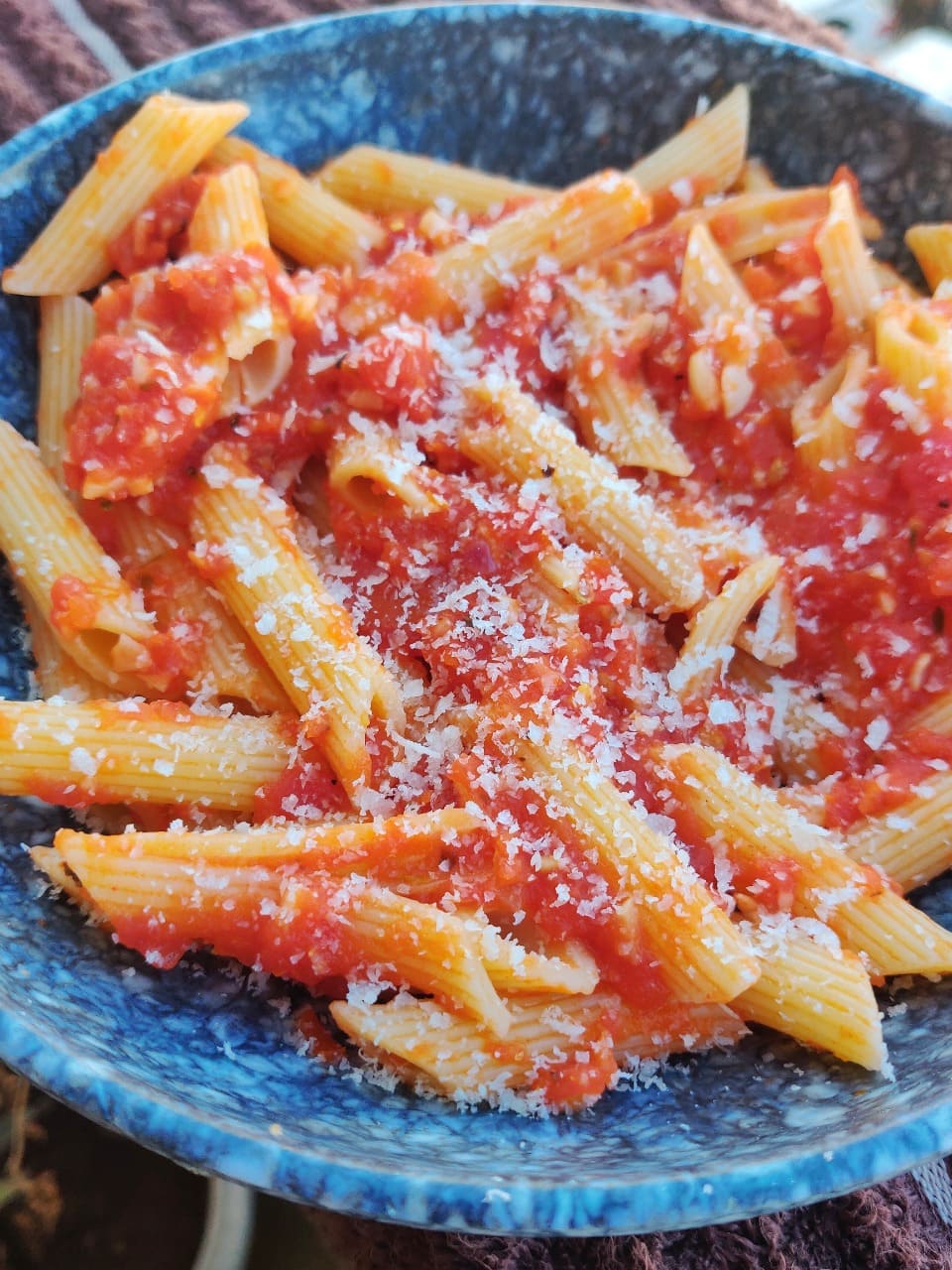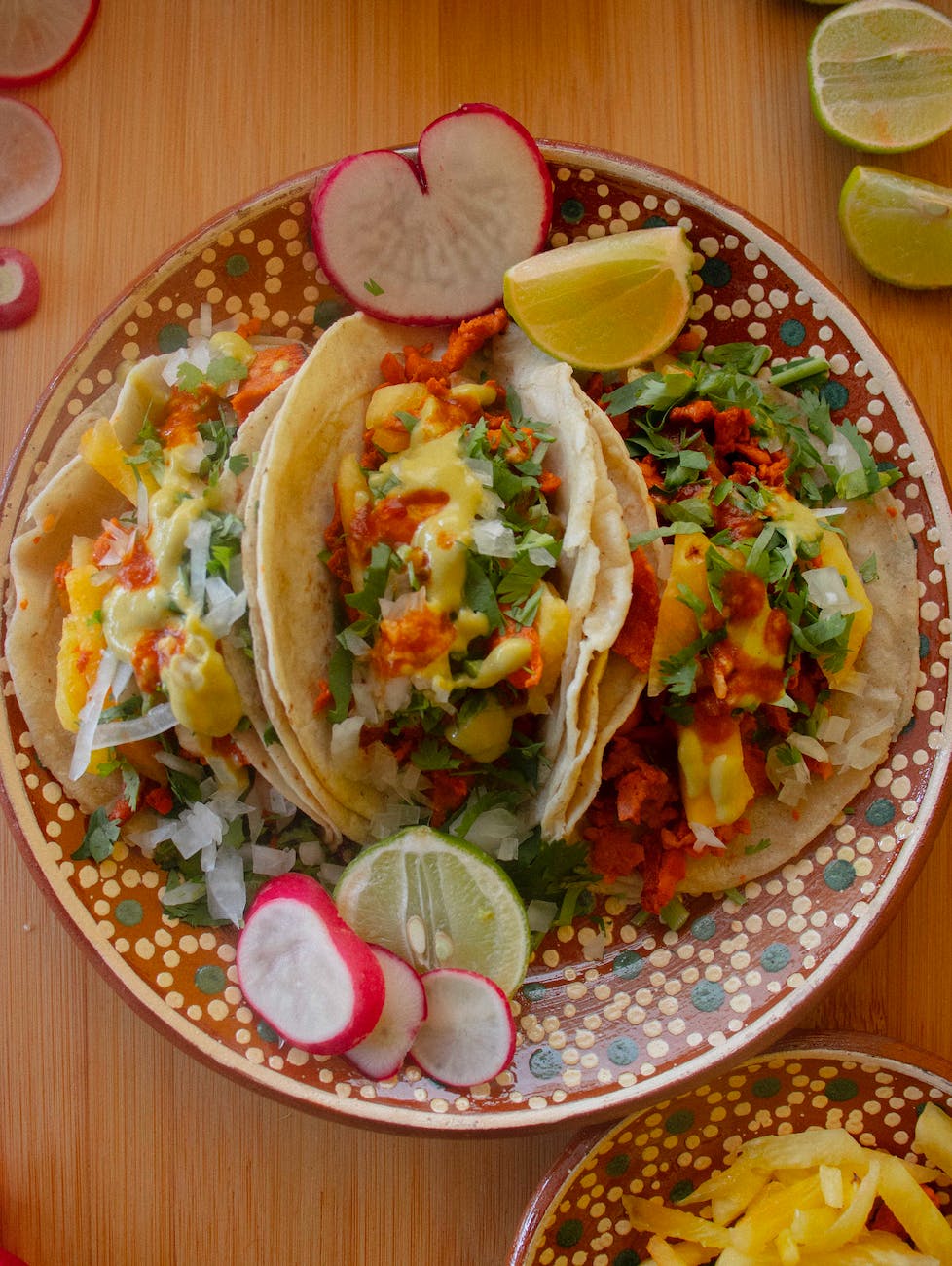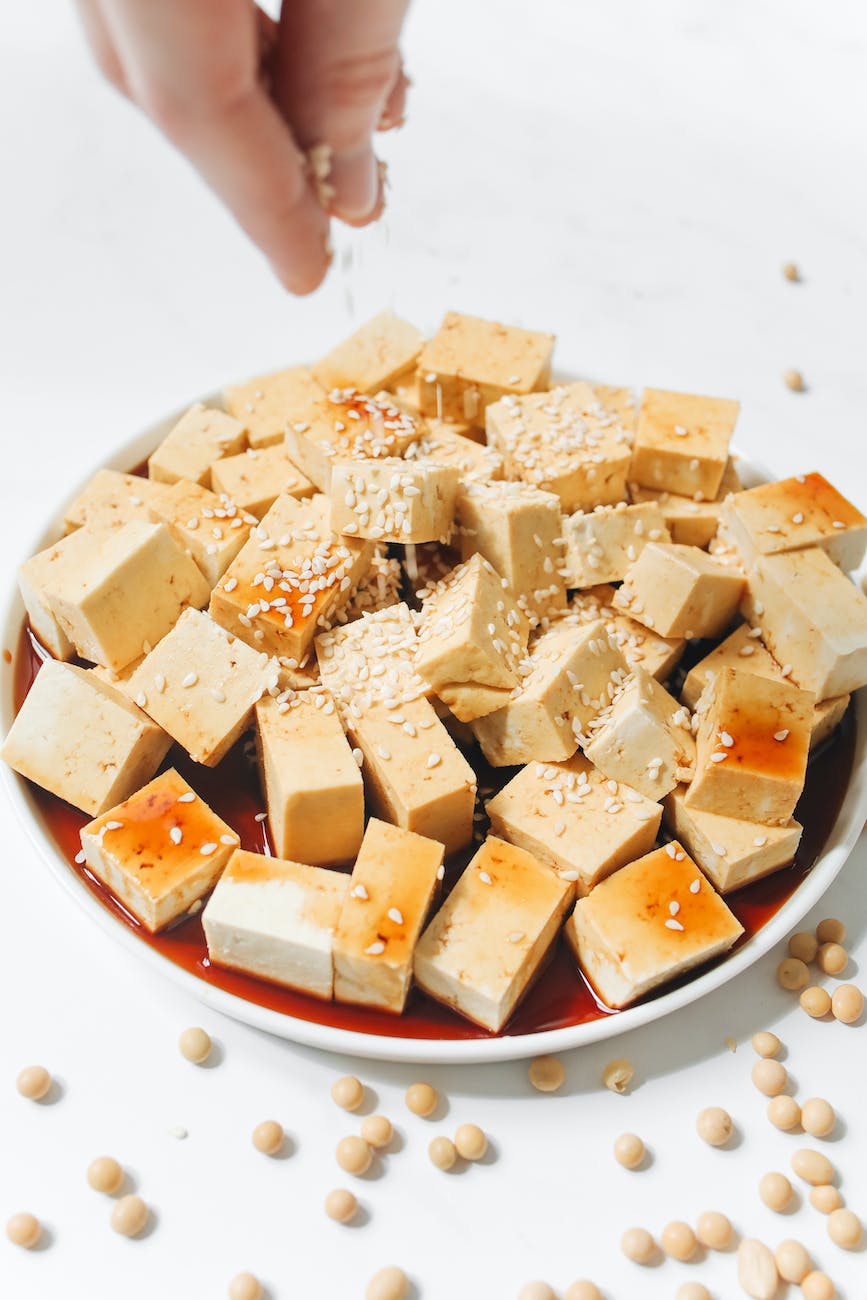
Embark on a delightful culinary journey to the sun-kissed lands of the Mediterranean, where vibrant flavors and fresh ingredients come together to create a tapestry of delicious and healthy dishes. By incorporating tofu into your meal prep, you can infuse these Mediterranean-inspired recipes with plant-based protein, while embracing the essence of the renowned Mediterranean diet known for its heart-healthy benefits. Tofu, with its versatility and nutritional value, makes a fantastic substitute for chicken, making your meals not only sustainable but also incredibly nourishing. 🍚🌱🥘
Join us as we explore these tantalizing tofu-powered Mediterranean cuisine meal prep ideas, bursting with flavors and goodness:
🍅 Tofu Caprese Skewers: Start your Mediterranean feast with a twist on the classic Caprese salad. Skewer sweet and juicy cherry tomatoes, cubes of marinated tofu, and fresh basil leaves, creating a colorful and appetizing presentation. Drizzle with a balsamic glaze and sprinkle with a touch of sea salt for an extra burst of flavor. The marinated tofu and assembled skewers can be made in advance and refrigerated, allowing the flavors to meld together and intensify. Serve these vibrant skewers as a refreshing and elegant appetizer or alongside a Mediterranean-inspired main course.
🥙 Tofu Gyro Wraps: Transport your taste buds to the bustling streets of Greece with tantalizing tofu gyro wraps. Marinate slices of tofu in a mixture of olive oil, freshly squeezed lemon juice, minced garlic, and a medley of Mediterranean spices like oregano, thyme, and paprika. Sauté the marinated tofu until golden and tender, infusing it with a burst of savory flavors. Wrap the flavorful tofu in warm and soft whole-wheat pita bread, and add a medley of fresh and crisp vegetables such as cucumbers, tomatoes, and lettuce. Finish off with a dollop of creamy tzatziki sauce or a drizzle of tangy tahini dressing for a truly authentic experience. These gyro wraps can be prepared ahead of time and stored in the refrigerator, ready to be enjoyed as a quick and satisfying meal.
🥗 Tofu Greek Salad: Experience the quintessential flavors of Greece with a protein-packed twist in a delightful tofu Greek salad. Combine crisp and refreshing romaine lettuce, juicy ripe tomatoes, crunchy cucumbers, thinly sliced red onions, and briny Kalamata olives to create a bed of fresh greens. Toss in cubes of marinated tofu for a substantial protein boost. Finish the salad with a sprinkle of crumbled feta cheese or vegan feta, a drizzle of extra-virgin olive oil, and a squeeze of tangy lemon juice. The tofu can be marinated in advance, and the vegetables can be washed, chopped, and stored separately, allowing for a quick assembly when you’re ready to enjoy a light and refreshing Mediterranean meal.
🍲 Tofu Spanakopita: Delight in the traditional Greek dish of spanakopita with a tofu-based twist. Sauté fresh spinach leaves with aromatic onions and minced garlic until wilted, then combine them with crumbled tofu and a sprinkle of dill and nutmeg. Layer the flavorful mixture between sheets of flaky phyllo pastry, brushing each layer with a drizzle of olive oil. Bake the spanakopita until golden and crispy, allowing the flavors to meld together into a savory and satisfying delight. The filling for the spanakopita can be prepared in advance, allowing you to assemble and bake it just before serving, ensuring a perfectly golden and delicious meal.
🍚 Tofu Lemon Rice Pilaf: Indulge in a burst of Mediterranean flavors with a delectable tofu lemon rice pilaf. Sauté tofu cubes until they develop a golden and crispy exterior, infusing them with a delightful texture. Combine the tofu with fragrant basmati rice, vegetable broth, freshly grated lemon zest, and a handful of fresh herbs like parsley and dill. Simmer the rice until it absorbs all the vibrant flavors, resulting in a fragrant and flavorful pilaf. Serve this aromatic dish as a side or as a main course, accompanied by a selection of Mediterranean-inspired sides. The tofu can be sautéed and the rice can be rinsed and soaked in advance, allowing for a smooth and efficient cooking process.
Indulge in the rich flavors of the Mediterranean while fueling your body with plant-based protein from tofu. These meal prep ideas not only offer a burst of taste but also contribute to a healthier, more sustainable lifestyle. Don’t forget to capture your creations and share them with us! 📸 Tag your Mediterranean-inspired tofu dishes with #MasalaMonk and @Masala.Monk on Instagram or Pinterest to join our growing community of food enthusiasts.
Save this post for future meal prep inspiration and embark on your own Mediterranean culinary adventure, adding your personal touch to these tofu-powered dishes.













